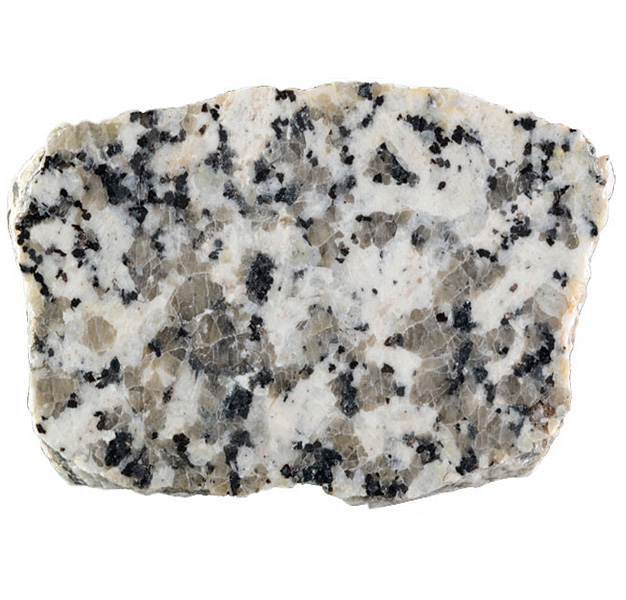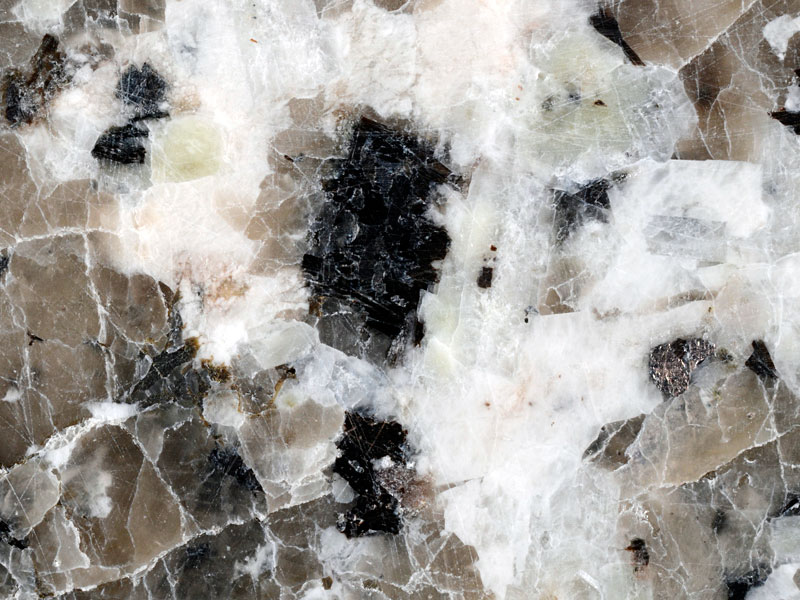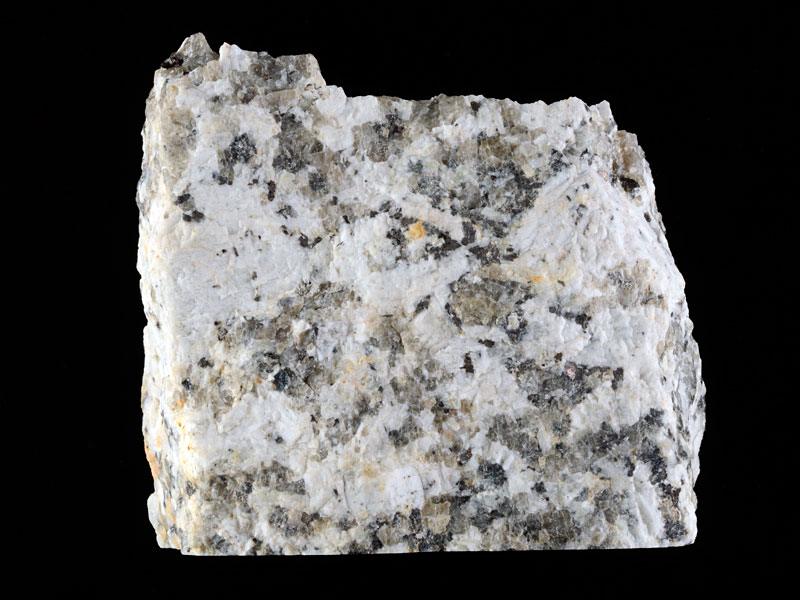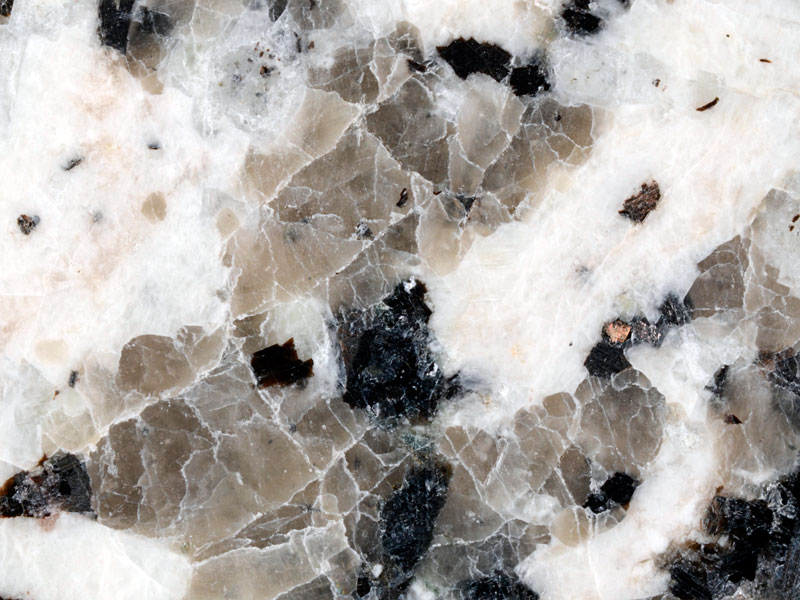
Fact sheet
This sample of biotite-rich granite comes from the Luxulyan quarry in the Luxulyan Valley in south east Cornwall. This sample is a less evolved portion of the intrusion, which was associated with the tourmaline and topaz-rich intrusions and mineralisation. The valley is part of a World Heritage Site containing the remains of extensive early 19th century industrial activity, including mining and quarrying, which at its peak included several water wheels and steam engines.
The thin section illustrates the quartz-rich nature of the rock, which also contains altered orthoclase, plagioclase and both biotite and muscovite. The biotite is notably rich in pleochroic haloes, indicating a high proportion of zircon and monazite crystals.
The United Kingdom Virtual Microscope (UKVM) collection consists of igneous, sedimentary and metamorphic rocks from around the UK.
It is intended as a teaching resource, helping to tell the story of the common rock types and how they form, and reflecting the history of the UK at the margins of the continent of Europe. The collection is a series of teaching sets, for example igneous rocks from the North Atlantic Igneous Province and SW England; high-temperature metamorphic rocks from Scotland and low-temperature metamorphic rocks from Wales; and sedimentary rocks, including English limestones and sandstones.









